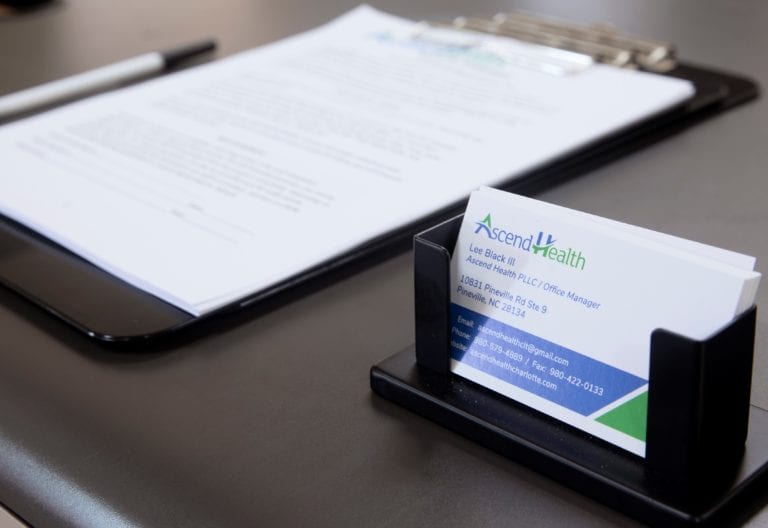Buprenorphine maintenance basics
When you commit to buprenorphine maintenance therapy, you take an important step toward achieving stability and long-term recovery from opioid use disorder. This form of medication-assisted treatment (MAT) combines a partial opioid agonist with counseling and support services to help you manage withdrawal symptoms, reduce cravings, and regain control over your life.
Buprenorphine was approved by the FDA in October 2002 and remains a first-line treatment for opioid dependence alongside methadone [1]. As a synthetic opioid partial agonist, it produces milder effects than full opioid agonists like heroin or methadone, significantly lowering the risk of respiratory depression and overdose. By occupying opioid receptors without activating them fully, buprenorphine creates a “ceiling effect,” giving you relief from withdrawal while minimizing abuse potential.
Mechanism of action
- Partial agonist at µ-opioid receptors, reducing cravings and withdrawal
- Antagonist at κ-opioid receptors, which may improve mood and reduce dysphoria
- Ceiling effect that limits euphoria and respiratory depression compared to full agonists [2]
Maintenance therapy benefits
Alleviating withdrawal symptoms
One of the most immediate advantages of buprenorphine maintenance is smoothing the transition off more potent opioids. By initiating treatment during the early stages of withdrawal—typically 12 to 24 hours after your last opioid use—you can avoid intense symptoms such as nausea, muscle aches, and anxiety [2]. This relief helps you focus on building healthy coping strategies rather than battling physical discomfort.
Safety and efficacy
Compared to methadone, buprenorphine shows a lower risk of life-threatening respiratory depression due to its partial agonist profile [1]. While some studies report higher retention rates with methadone, retention on buprenorphine increases at daily doses of 30 to 32 mg, making it a robust option for many patients.
Table: Buprenorphine vs methadone
| Feature | Buprenorphine | Methadone |
|---|---|---|
| Opioid receptor activity | Partial agonist (µ), antagonist (κ) | Full agonist (µ) |
| Respiratory depression risk | Lower, ceiling effect | Higher, dose dependent |
| Abuse potential | Lower when combined with naloxone | Higher |
| Diversion risk | Reduced by buprenorphine/naloxone formulation | Less mitigated |
| Retention rate | Increases at ≥30 mg/day | Generally higher overall |
Preparing for treatment
Eligibility criteria
To start a maintenance program, you should:
- Have a diagnosis of opioid use disorder
- Be willing to abstain from other opioids for at least 12–24 hours
- Undergo an evaluation by a licensed clinician
- Agree to participate in counseling and support services
Initial induction process
Your provider will guide you through induction, adjusting your first buprenorphine dose to relieve withdrawal without triggering precipitated withdrawal. You’ll begin with a low dose—often 2 to 4 mg—and increase based on symptoms and response. This personalized approach ensures you find the right dose safely and comfortably.
Choosing a program
Selecting the right outpatient program sets the foundation for success. Look for a clinic that offers comprehensive care, including medical supervision, individual counseling, and peer support. If you need an accessible option that accepts your insurance, explore an outpatient mat program accepting insurance or a dedicated buprenorphine addiction treatment program.
Managing your treatment
Adjusting dosages
Regular follow-up appointments help your clinician assess how well your dose controls cravings and withdrawal. Dosage adjustments are common during the first few weeks. Over time, many people stabilize on a maintenance dose that balances efficacy and side effects.
Therapy and counseling
Medication works best alongside psychosocial support. Evidence-based therapies—such as cognitive behavioral therapy and motivational interviewing—address the root causes of addiction and equip you with coping skills. Your plan may include:
- Individual therapy sessions
- Group meetings with peers
- Family counseling to rebuild relationships
- Holistic therapies, like mindfulness or yoga
Insurance coverage guide
In-network plan options
Major insurance carriers often cover buprenorphine maintenance as part of their substance use disorder benefits. Check whether your plan includes:
- Blue Cross Blue Shield and other BCBS products [3]
- Aetna [4]
- Medicaid plans through participating clinics [5]
- Commercial PPO and HMO plans for outpatient MAT
Insurance verification support
Understanding your benefits can be overwhelming. A trusted provider will verify your coverage before you begin. If you need assistance, look for an insurance verified mat program or a clinic offering insurance covered outpatient mat. This upfront clarity prevents unexpected costs and helps you focus on recovery.
Accessing care conveniently
Same-day appointments
Delaying treatment can increase the risk of relapse. Many clinics now offer streamlined intake processes and same day suboxone appointment options, so you can start therapy without waiting weeks.
Telehealth options
Telemedicine has transformed MAT accessibility. With video consultations, you can:
- Complete initial evaluations remotely
- Receive prescription renewals online
- Access counseling without commuting
Explore telehealth mat appointment scheduling or telehealth suboxone clinic appointments to find a format that fits your lifestyle.
Ascend Health advantages
Experienced clinicians
At Ascend Health, you’ll work with board-certified addiction specialists and nurse practitioners trained through SAMHSA’s PCSS-MOUD program. They’ll develop an individualized maintenance plan rooted in best practices and supported by the latest research.
Confidential setting
Privacy is paramount. Your sessions take place in a secure, discreet environment, whether in-person or via telehealth. You can trust in our confidential outpatient mat services to protect your personal information and support your journey.
Next steps and support
Getting started
If you’re ready to begin maintenance therapy, schedule an appointment with an outpatient suboxone treatment program or connect directly with a buprenorphine provider to verify your coverage and set up your first visit. Our team will guide you through intake, benefits verification, and induction planning.
Additional resources
Beyond maintenance therapy, additional treatment options can complement your plan:
- Long-acting injectable MAT like Sublocade treatment for opioid addiction or sublocade injection treatment program
- Peer support groups and community recovery meetings
- Educational materials on relapse prevention and wellness
By leveraging medication, counseling, and an empathetic care team, you can navigate buprenorphine maintenance therapy with confidence. You’re not alone—comprehensive care and support are available to help you achieve and sustain recovery.



